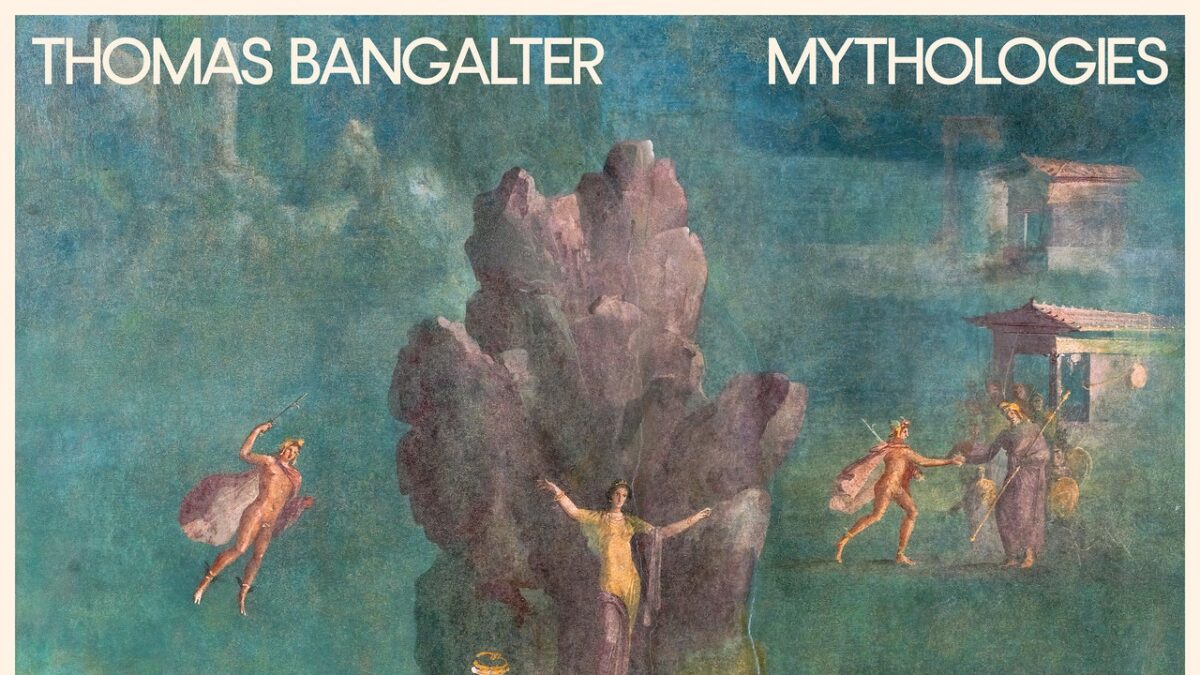
Even before Daft Punk announced their retirement in 2021, fresh updates from the duo were often old news: the release of bonus tracks, archival concert footage, album reissues. It was a welcome surprise, then, when Thomas Bangalter announced the release of Mythologies, his first full-length solo project in 20 years. It was even more surprising that the release was not an electronic record, but an orchestral score originally composed for Angelin Preljocaj’s ballet of the same name. This sharp left turn offers a look at Bangalter’s work beyond the dancefloor—and stripped of the helmet he was apparently all too ready to shed.
Mythologies embodies classical tradition, both musically and culturally, in 23 movements that draw inspiration from mythical tales and figures. Take “Le Minotaure”: The myth of the Minotaur concerns a half-man, half-bull monster created by a god’s vengeful curse. The creature is kept isolated in the center of the labyrinth until the hero Theseus slaughters it on a quest. Bangalter’s piece begins with low strings and grumbling brass, stopping and starting in bursts, anguished and suspenseful. Heavy timpani and syncopated rhythms give way to a lamenting violin solo that sounds like a reinterpretation of the central character of the myth: not a fearsome monster, but a lonely creature crying out into the darkness.
At first glance, these sprawling symphonic compositions bear little resemblance to Bangalter’s more recognizable club anthems and dance epics. But both mediums rely on balance, voicing, and form; both de-emphasize words, focusing instead on sound and atmosphere. Mythologies allows Bangalter to seek a different kind of satisfaction. As he said in an interview with The New York Times, “To write a chord or a melody and have the performers—human beings—play it and have this instant emotional quality to it, is really quite exhilarating. It’s not the fight you have against machines.”
While Bangalter might have wanted to distance himself from computers, lingering sensibilities from electronic music still seep into his compositions. Pieces like “Aphrodite,” “Zeus,” and “Circonvolutions” sound as though they are built on the loops of his past: a repeated arpeggio, a sequenced melody, the same articulation asserted over and over again. Though such repetition may suit a choreographer’s work, the technique grows wearisome across the album. With an entire orchestra at his disposal, the reliance on these mechanistic structures feels like a wasted opportunity to fully explore the expressive potential of the symphonic medium.
Mythologies can be captivating. The devastating “Icare” stretches upward bit by bit and tumbles through the sky like its story’s subject. “Danae,” the tale of a prophecy fulfilled, begins and ends with the same delicate dissonance of fluttering strings, a cyclical choice that imparts a sense of inevitability. A somber chorale theme appears in several pieces, nodding to the fundamentals of classical music and Bangalter’s appreciation of their storytelling potential. This melodic recurrence allows for moments of solace and reflection within the often dour source material, starkly at odds with his former duo’s habitually upbeat demeanor. Mythologies sounds like the work of an artist stepping out of his comfort zone in search of personal creative fulfillment. It might be equally rewarding for the listener if only any of these pieces were as memorable as Daft Punk’s songs.
All products featured on Pitchfork are independently selected by our editors. However, when you buy something through our retail links, we may earn an affiliate commission.















